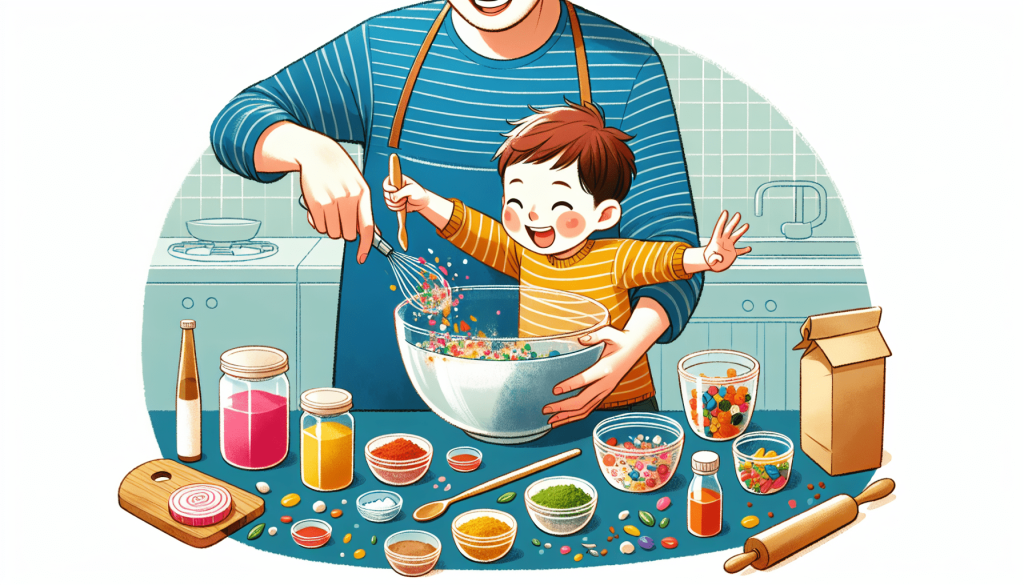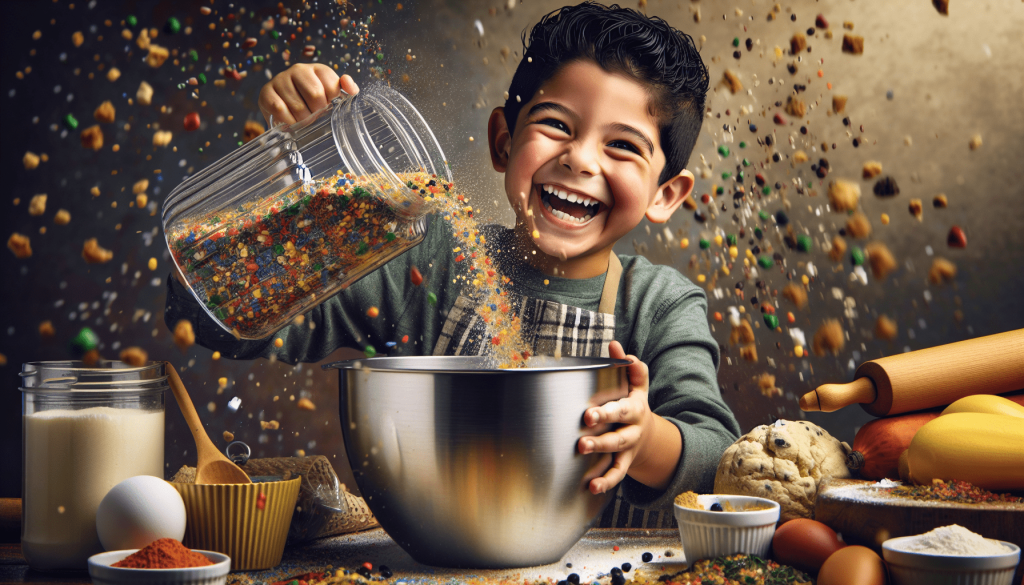Today, let’s discover the top 10 cooking tips that will make cooking with kids an absolute delight! Cooking with your little ones can be a fun and educational experience for both of you, but it can also get a bit chaotic if you’re not well-prepared. From safety tips to engaging activities, this article will provide you with all the essential advice you need to create precious memories in the kitchen while nurturing their passion for food. So grab your apron and get ready to embark on a culinary adventure with your aspiring young chefs!

Choose Age-Appropriate Recipes
Consider the child’s age and skills
When cooking with kids, it’s important to choose recipes that are age-appropriate and align with their skill level. Younger children may need simpler tasks, such as measuring ingredients or stirring batter, while older children can take on more complex tasks like chopping vegetables or using kitchen appliances. By considering the child’s age and skills, you can ensure that they are engaged and capable of successfully completing the recipe.
Start with simple and safe recipes
To build confidence and excitement in the kitchen, start with simple and safe recipes. This could include dishes like homemade pizzas, easy pasta salads, or fruit skewers. These recipes typically require minimal ingredients and straightforward steps, making them perfect for beginners. By starting with simple recipes, kids can learn the basics of cooking while gaining a sense of accomplishment.
Gradually introduce more complex recipes
As children become more comfortable and experienced in the kitchen, it’s important to gradually introduce more complex recipes. This could involve dishes that require more advanced cooking techniques or combinations of flavors. By gradually increasing the complexity of the recipes, children can continue to challenge themselves and expand their cooking skills.
Prepare the Kitchen Environment
Clear and clean the workspace
Before beginning any cooking activity, it’s essential to clear and clean the workspace. This means removing any unnecessary items or clutter from the countertops to create a safe and organized area. Clearing the workspace also helps to minimize distractions and allows kids to focus on the task at hand.
Organize ingredients and utensils
To make cooking with kids easier and more efficient, it’s important to organize the ingredients and utensils. Prior to starting the recipe, gather all the necessary ingredients and place them within easy reach. This way, kids can easily access what they need without having to search for each item. Additionally, arrange the utensils and cooking tools in a designated area, ensuring they are clean and ready for use.
Ensure safety measures are in place
When cooking with kids, safety should always be a top priority. Before starting any cooking activity, review and implement safety measures. This includes ensuring that knives and other sharp tools are kept out of reach, demonstrating proper techniques for handling heat sources, and supervising children as they work in the kitchen. By prioritizing safety, you can create a secure environment for kids to explore their culinary skills.
Teach Basic Kitchen Safety
Explain the importance of handwashing
One of the most fundamental lessons in the kitchen is the importance of handwashing. Teach children that washing their hands before and after handling food is crucial for maintaining cleanliness and preventing the spread of germs. Show them the proper way to wash their hands, including using warm water and soap for at least 20 seconds. By instilling this habit early on, you can help children develop important hygiene practices in the kitchen and beyond.
Demonstrate safe knife handling
When it comes to using knives in the kitchen, safety is paramount. Teach children the proper way to handle knives, emphasizing the importance of holding the handle and keeping fingers away from the blade. Start with child-safe knives or plastic utensils and teach basic cutting techniques, such as using a rocking motion or a claw grip for holding ingredients. As they gain confidence and experience, gradually introduce sharper knives while closely supervising their progress.
Educate about stove and oven safety
Cooking on stoves and ovens can pose potential hazards, so it’s crucial to educate children about stove and oven safety. Show them how to turn on and off the appliances, emphasizing the importance of adult supervision when operating them. Teach them about hot surfaces and the need to use oven mitts or pot holders. Additionally, ensure they understand the dangers of reaching over or touching hot burners. By teaching stove and oven safety, you can help children build essential cooking skills while minimizing risks.
Encourage Healthy Choices
Discuss the importance of balanced meals
Cooking with kids provides the perfect opportunity to discuss the importance of balanced meals. Explain that a balanced meal includes a variety of nutrients from different food groups, such as carbohydrates, proteins, fruits, vegetables, and fats. Discuss the benefits of each food group and how they contribute to overall health and wellbeing. By promoting the importance of balanced meals, you can instill healthy eating habits in children from an early age.
Include a variety of fruits and vegetables
When planning recipes with kids, it’s important to include a variety of fruits and vegetables. Encourage children to explore different types of produce and experiment with incorporating them into their dishes. Teach them about the nutritional benefits of fruits and vegetables and how they can add color, flavor, and texture to their meals. By incorporating a wide range of fruits and vegetables, you can help children develop a love for wholesome and nutritious food.
Limit sugary and processed ingredients
While it’s important to indulge in treats from time to time, it’s also crucial to limit sugary and processed ingredients in cooking with kids. Explain to children that too much sugar or processed food can negatively impact their health and energy levels. Encourage them to explore alternative sweeteners, such as honey or maple syrup, and to opt for whole, unprocessed ingredients whenever possible. By instilling mindful eating habits, you can help children make healthier choices in the kitchen and beyond.

